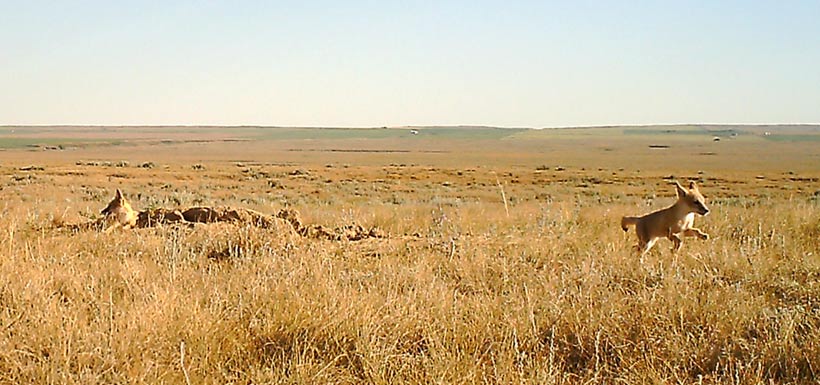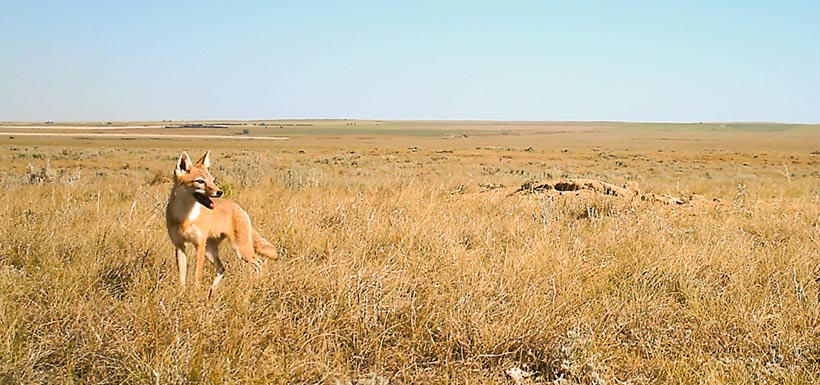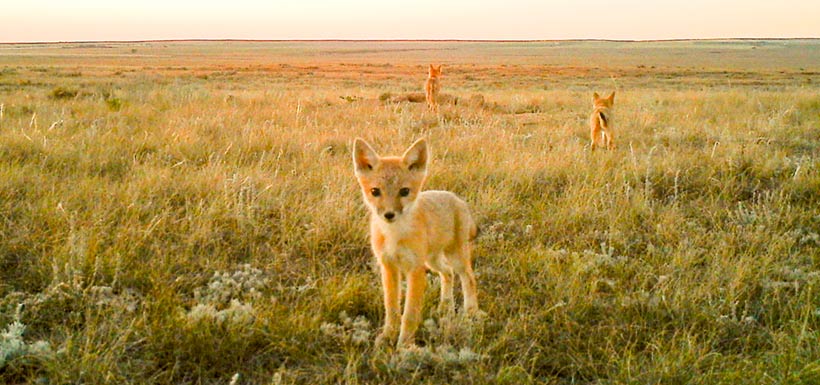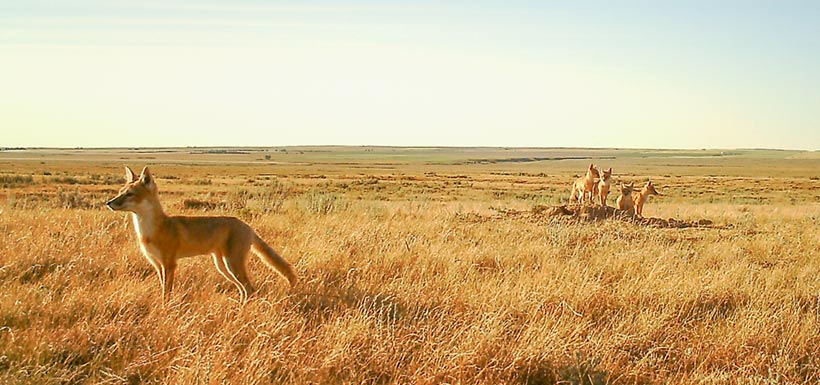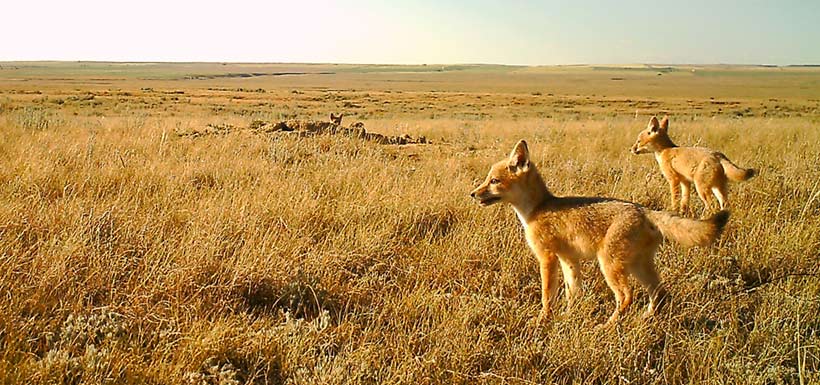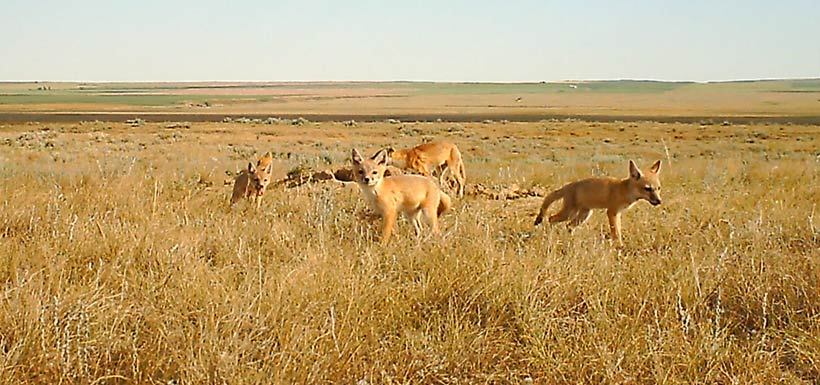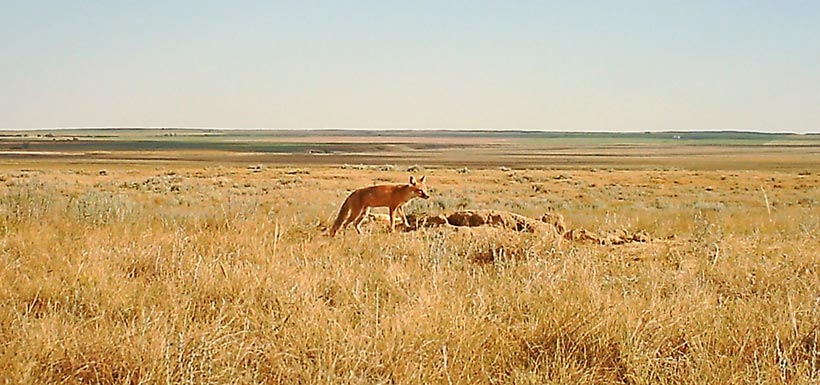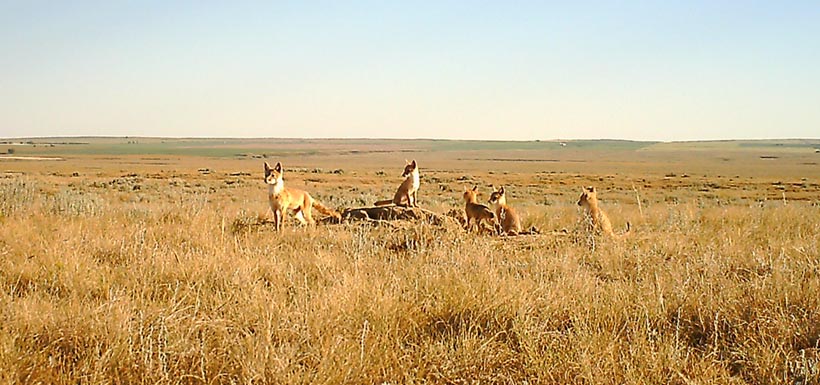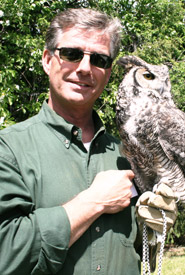If you conserve it, they will come
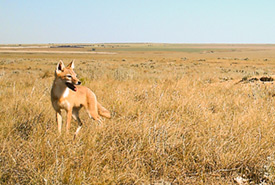
Swift fox in southern Alberta (Photo by NCC)
A den of swift foxes, a species once extirpated (locally extinct) in Canada, was recently discovered on a Nature Conservancy of Canada (NCC) conservation site in southeast Alberta.
The discovery of this den is proof that the work that conservation organizations like NCC is doing to secure and steward privately owned land is helping species at risk and, in this case, providing a home for a rare and reintroduced species.
The return of swift foxes to Canada is one of the most successful species reintroduction stories. The swift fox was once abundant in the short- and mixed-grass prairies of Alberta, Saskatchewan and Manitoba. Unfortunately they were declared extirpated in Canada in the 1930s. Their decline was linked primarily to the growth of large-scale agriculture and the resulting loss of habitat.
In 1973, a privately run program in Canada began breeding swift foxes in captivity in the United States, so that they could eventually be reintroduced back into the wild. With the help of federal agencies, non-governmental organizations and academia, including the Cochrane Research Institute and the Calgary Zoo Conservation Research Centre, the program was a success. The first captive-raised swift foxes were reintroduced along the Alberta-Saskatchewan border and the Milk River Ridge areas in 1983.
These foxes survived, and over the years more captive-bred animals were reintroduced back into the wild. Between 1983 and 1997, more than 900 animals were released in Alberta, Saskatchewan and Manitoba.
Today, it is estimated that there is a small, relatively stable population of about 100 wild swift foxes in Alberta. Most are offspring of the released animals. This population is classified as threatened under Canada’s Species at Risk Act, as their small population is still very vulnerable.
Because swift foxes spend more time underground than any other species of dog, their dens are very important to their survival. Swift foxes use their dens year-round for protection against predators and as a place to raise their young.
Taking care of our natural spaces has never been more important than it is today. The Canadian prairies are the world’s most endangered ecosystem. More than half of the planet’s temperate grasslands have been converted to crops and other land uses. The protection of these grasslands is critical to the survival of the species that depend on them, including swift foxes.
The Nature Conservancy of Canada's first project in Alberta was in 1970 with the acquisition of Wagner Natural Area — 320 acres (130 hectares) of highly significant wetland habitat. Since then, we have completed more than 200 projects, protecting 1.1 million acres (445,000 hectares) of this province's most ecologically significant land and water.
This important work is made possible through the vision of Albertans, along with the financial support of generous residents, businesses, family and community foundations in addition to government partners, such as the Province of Alberta Land Stewardship Grant and Environment and Climate Change Canada's Natural Areas Conservation Program.
By working together with local communities, other land trust organizations and private landowners, NCC will continue to conserve and steward these lands to ensure animals like the swift fox still have wild places to live.

